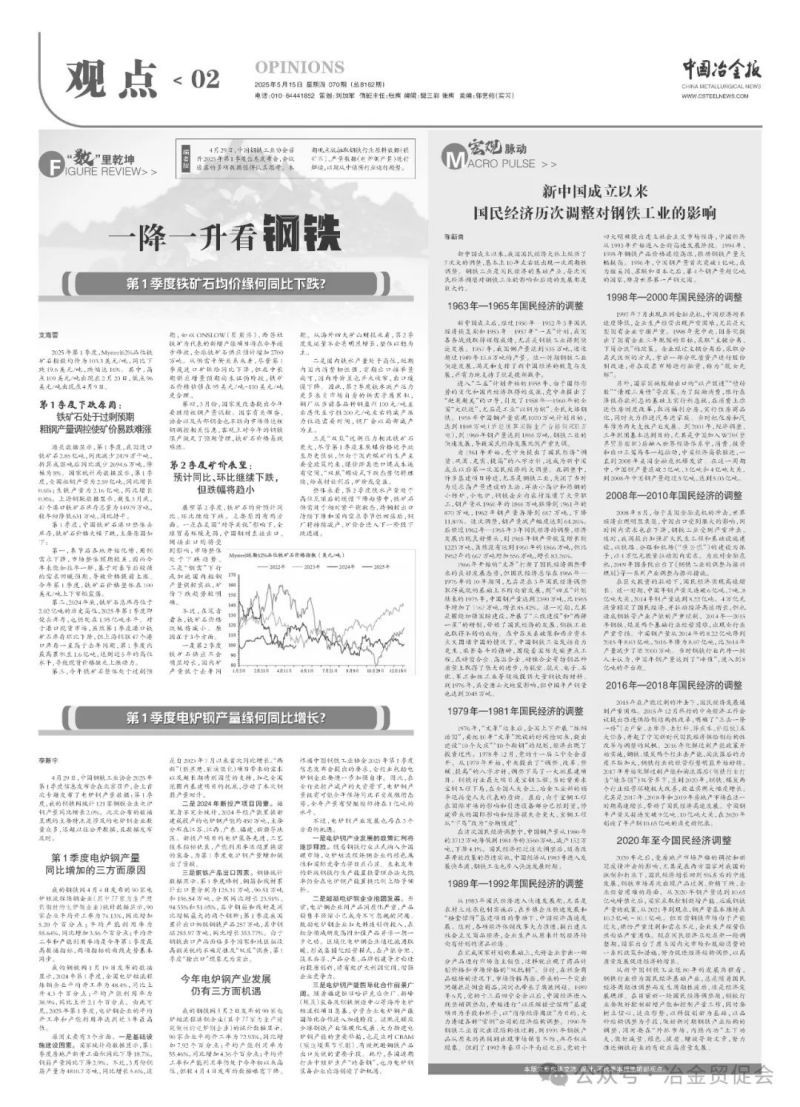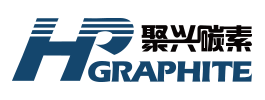【Expert View】Why Did Electric Arc Furnace Steel Production Increase Year-on-Year in Q1?

Graphite electrodes are key materials for EAF steelmaking, mainly used for arc heating. With excellent conductivity
and high-temperature resistance, they are crucial for improving EAF production efficiency and quality.
【Expert View】Why Did Electric Arc Furnace Steel Production Increase Year-on-Year in Q1?
On April 29, the China Iron and Steel Association held the 2025 Q1 information release conference in Beijing, where electric arc furnace (EAF) steel production data was released for the first time: in Q1, the statistics show that the EAF steel output of 121 steel enterprises increased by 2.0% year-on-year. The main features of the data released are the large number of EAF steel enterprises involved, far exceeding previous public data, and the timeliness of the data release.
Three Reasons for Year-on-Year Increase in Q1 EAF Steel Production
On April 4 from 90 short-process EAF steel enterprises (of which 77 produce construction steel), showing the average operating rate was 74.13%, up 5.20 percentage points year-on-year; the average capacity utilization was 55.64%, up 3.56 percentage points year-on-year; both the average operating rate and capacity utilization were the highest in Q1 this year, and their curves basically moved in sync.
Data from MySteel.com on January 19 showed that in Q1 2024, the average operating rate of national short-process EAF steel enterprises was 48.4%, up 4.3 percentage points year-on-year; average capacity utilization was 38.9%, up 2.1 percentage points year-on-year. It can be seen that in Q1 2025, the average operating rate and capacity utilization of EAF steel enterprises reached their highest levels in nearly three years. The reasons mainly include three aspects.
First, infrastructure construction factors. Data from the National Bureau of Statistics show that in Q1, newly started real estate construction area decreased by 18.7% year-on-year, and rebar production declined by 2.9% year-on-year. However, rebar production in March was 48.107 million tons, up 5.6% year-on-year, the first year-on-year growth since July 2023. Demand driven by "two new" projects (new infrastructure and new urbanization) and support from ultra-long special government bonds, along with nationwide infrastructure projects providing a bottom line, promoted the rebound in rebar production.
Second, new projects put into operation in 2024. According to incomplete statistics by the author, about 4.5 million tons of EAF steel capacity newly built through capacity replacement were put into operation in 2024, mainly distributed in Jiangsu, Jiangxi, Guangdong, Fujian, Xinjiang and other regions. The newly commissioned projects have advanced EAF equipment and excellent process technical indicators, with capacity utilization far exceeding that of equipment before replacement, contributing to the increase in Q1 EAF steel output.
Third, steel product export factors. Statistics from the Steel Association show that in Q1, cumulative exports of billets, rebar, and wire rod were 1.2531 million tons, 905,100 tons, and 1.9654 million tons respectively, up 23.91%, 94.33%, and 51.05% year-on-year respectively, with rebar and wire rod being the two steel types with the largest year-on-year growth; cumulative exports of primary steel products reached 2.57 million tons in Q1, including 2.5597 million tons of steel billets, up 353.77% year-on-year. Due to uncertainties of high tariffs and anti-dumping investigations imposed by many countries and regions on steel export products, "rush to export" was especially prominent in Q1.
Three Opportunities for EAF Steel Industry Development This Year
Data released on May 2 from 90 short-process EAF steel enterprises (of which 77 produce construction steel) showed the average operating rate was 72.93%, up 7.92 percentage points year-on-year; average capacity utilization was 55.46%, up 4.36 percentage points year-on-year; both indicators remained at high levels since the beginning of this year but slightly declined compared to April 4 data.
According to requirements proposed by the China Iron and Steel Association at the 2025 Q1 information release, the entire industry, including EAF steel enterprises, must further strengthen self-discipline. Therefore, under the backdrop of industry-wide production control and reduction, EAF steel output is very likely to maintain a flat or slightly increased year-on-year trend throughout the year, with annual output expected to remain at around 100 million tons.
However, the EAF steel industry also faces three opportunities.
First, the policy dividends for EAF steel industry development will gradually be released. As the steel industry is formally included in the national carbon market, the green attributes and international competitiveness of short-process EAF steel enterprises will become increasingly prominent. The upcoming revised steel industry capacity replacement management measures will likely continue to favor the capacity replacement ratio of EAF steel.
Second, encouragement of group development among EAF steel enterprises. Currently, serious product homogenization and shrinking sales radius among EAF steel enterprises have become non-negligible issues. Encouraging increased investment in technological innovation, and developing high value-added products in niche fields is not an overnight effort. Regional EAF steel enterprises forming group-based operation models to share production capacity allocation, technology, product classification, and brand building will effectively expand profit margins and enhance competitiveness.
Third, broad prospects for international cooperation of EAF steel capacity. With the groundbreaking of overseas short-process EAF projects such as Fujian Hengwang Kazakhstan Metallurgical Plant and Xinfeng (Egypt) Equipment and Steel Manufacturing Center, the international cooperation of Chinese-funded EAF steel capacity is accelerating. This aligns with the global steel industry’s low-carbon development and the important initiative to build new EAF steel capacity. It is also an effective way to avoid steel product export tariffs caused by the CBAM (Carbon Border Adjustment Mechanism). In addition, Thailand’s recent crackdown on mid-frequency furnace-produced "local steel" creates new opportunities for EAF steel equipment enterprises to go abroad.

Feel free to contact us anytime for more information about the EAF Steel market. Our team is dedicated to providing you with in-depth insights and customized assistance based on your needs. Whether you have questions about product specifications, market trends, or pricing, we are here to help.
No related results found








0 Replies